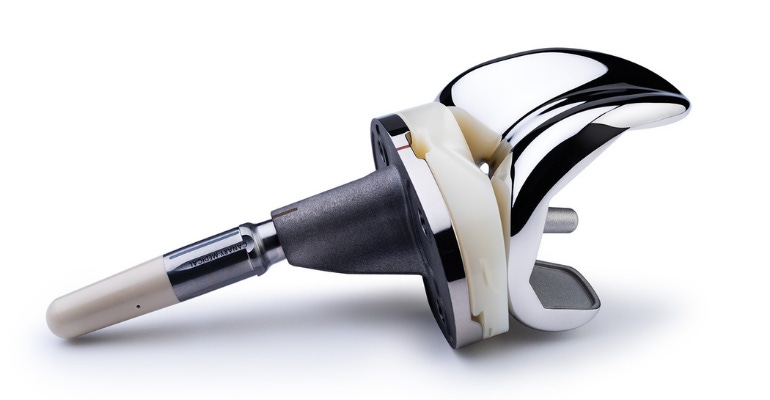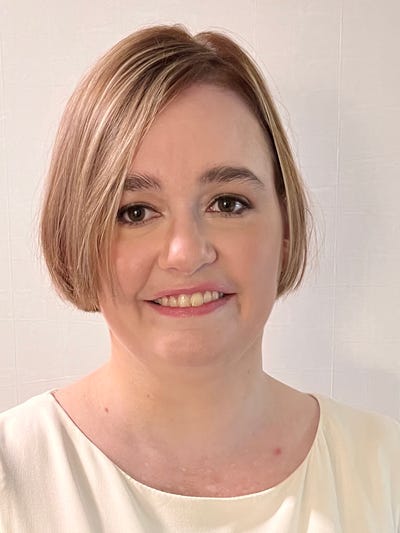What Is Driving Next-Gen Remote Patient Monitoring?
Hint: It’s not just COVID-19 that has the market demanding more remote monitoring capabilities.
September 26, 2021

Editor's note: This is the first of a two-part series on remote patient monitoring. Click here for the second installment.
Open any marketing report on remote patient monitoring and you'll see stats showing a burgeoning market.
A recent report from Pleasanton, CA-based firm AllTheResearch, for example, values the global remote patient monitoring market at $975 million in 2020, with a compound annual growth rate of 18.9% to reach an expected value of about $3.2 billion by 2027.
Some of the driving forces behind the rapid growth of this healthcare sector are obvious, like the COVID-19 pandemic. But this trend was in motion long before we ever heard about the SARS-CoV-2 virus. MD+DI spoke with industry experts from Medtronic, Zimmer-Biomet, and TE Connectivity for an in-depth exploration of the challenges and opportunities in remote patient monitoring.
The COVID-19 impact on remote patient monitoring
While this is one of the more obvious factors behind the explosive growth of the remote patient monitoring market, we can't really report on the space without first looking at the pandemic impact.
"If you look at COVID-19, it's accelerated this, I mean it was a process that was already occurring, but it has called for, I think, an even more astute focus on these types of solutions," Charlie Covert, vice president and general manager of the pain therapies business at Medtronic, told MD+DI.
The pandemic forced the entire healthcare industry and its stakeholders into a more remote environment, said Liane Teplitsky, vice president and general manager of worldwide robotics at Zimmer Biomet.
"We were forced to go remote with everything that we were doing, and so people innovated quickly, and looked at what potentially they could do to be able to reach patients and make sure they were getting the best care possible even if they couldn't come into the office," Teplitsky told MD+DI. "I know we did a pretty quick turn on our mymobility platform to make sure that it was just more easily accessible to any surgeon out there."
Zimmer Biomet partnered with Apple a few years back to develop the mymobility digital care management platform that uses iPhone and Apple Watch to help orthopedic surgeons deliver support and guidance to patients through a more connected experience. Mymobility is designed to deliver continuous data and patient-reported feedback to facilitate care, outcomes, and patient satisfaction about surgical preparation and recovery. So when COVID-19 hit, the company made sure its physician customers had that patient engagement component to deliver pre-op care, and even post-op physical therapy remotely.
In April 2020, FDA decided to allow both Dexcom and Abbott to supply continuous glucose monitoring (CGM) systems for use in the hospital setting during the pandemic. This allows frontline healthcare workers in hospitals to remotely monitor patients' glucose levels while minimizing exposure to the virus, and preserving use of personal protective equipment. That was especially important because the glucose levels of diabetes patients hospitalized with COVID-19 tend to run way too high, explained Dexcom CEO Kevin Sayer in an interview with MD+DI last year. He also said that COVID-19 patients who were not previously diagnosed with diabetes were experiencing high glucose levels too.
Bill Irwin, an engineer and a senior manager of business development for TE Connectivity’s sensors business, also made a good point about how remote patient monitoring devices helps with the current medical staffing challenge healthcare systems are experiencing.
"We've seen in the last, I guess 18 months here while we've been going through the pandemic, that there's been challenges with medical staffing. So remote monitoring helps focus on the people they really need to help the most," Irwin told MD+DI.
Consumer savviness is also driving the remote patient monitoring trend
Probably the second biggest factor driving the remote patient monitoring growth is that consumers are becoming increasingly tech savvy.
"If you look at where we have been historically, typically patients just took the word of their physician or surgeon, right? And whatever they told them would go, and they would follow along that path," Teplitsky said.
That still happens today, she said, but with the added component of patients being more aware and more educated about their healthcare options. Today, patients are quick to do their own homework online to learn what types of procedures are being done for their particular issue, and they're looking up information about their surgeon in advance so that by the time they go in for their pre-op appointment, they're already pretty aware of what solutions are out there.
"They're just used to having technology at their fingertips ... they're starting to expect it in healthcare as well," Teplitsky said.
While physicians have historically been somewhat slow to adopt new technologies, especially things that impact the workflow, that is beginning to change as they become more open to digital solutions as well.
"Our clinicians are also seeing more value in the ability to have, let's say, more real-time data at their fingertips to understand what's happening with their patients while they're out of an acute care setting and in living their lives," said Medtronic's Covert. "They're more adaptive, more versed in in wanting to accept these types of solutions."
Sensors and other enabling technology
Medical device manufacturers wouldn't be able to develop remote patient monitoring solutions without certain enabling technologies, such as sensors. That's where suppliers like TE Connectivity come in.
"We see things like the Internet of Things and wearables technology really starting to impact medical devices too," Irwin said. "And as the devices become smaller, and sensors become smaller, we do things like more digital signal processing, it enables battery-powered devices that go longer in between charges … we also see that really expanding out of the traditional monitoring space."
Looking at the future of sensor technology, Irwin said he sees sensors continuing to become more seamless and used in devices that are less intrusive. That's important to overcome the limitations of traditional patient monitoring techniques.
"When we think about today's world we gather a lot of data at a discrete point in time, and that might be during a checkup with your doctor," he said. "I think we've all experienced going to the doctor and it might not be the peak moment to get our best measurements of the week. Maybe we're stressed out, maybe we had an intense meeting beforehand, or we're running late after dropping the kids off, and as these devices really measure us throughout our lives it gives both a patient and the doctors a more complete view."
From a supplier perspective, medical device customers are looking for sensors that are smaller, user less power, and able to survive harsher environments, Irwin said.
A wearable device designed to enable remote patient monitoring for instance, needs to be able to be on the patient throughout their daily activities.
"That patient is going to maybe go from air conditioning to a hot car, to out for a run or a swim, so the devices are exposed to a lot of environments that they maybe wouldn't traditionally get exposed to in a doctor's office or hospital setting," Irwin said. "For us that requires things like, 'how do we seal and protect the sensor? how do we protect it from shock and vibration."
Without sensor technology, Zimmer Biomet would not have been able to develop the first "smart" knee implant on the market for total knee replacement surgery, which was recently cleared by FDA. The Warsaw, IN-based company partnered with Vancouver, British Columbia-based Canary Medical, a medical data company, on the technology. The Persona IQ (shown in the featured image at the top of this story) combines Zimmer Biomet's Persona knee implant with Canary Medical's implantable canturio te tibial extension sensor technology that measures and determines range of motion, step count, walking speed, and other gait metrics. Persona IQ will work together with Zimmer Biomet's remote care management platform, mymobility with Apple Watch, as well as other components of the company's ZBEdge Connected Intelligence Suite.
Another technology that is enabling the explosive growth we're seeing in the broader digital health sector and especially in terms of remote patient monitoring devices is 5G, which came to maturation in 2020. Several experts we consulted back at the end of 2019 when we were making industry predictions for 2020 (which weren't as far off as you might expect, considering what a wildly unprecedented year that turned out to be) cited 5G as a trend to watch.
“Digital health is king and 5G is its crown,” said Maria Shepherd, president and CEO at Medi-Vantage, and one of the experts we consulted for our 2020 predictions. That's especially true in the context of rural populations, she noted.
"Rural care is the next frontier for large healthcare systems to provide care in remote areas through telehealth,” Shepherd said. “The quality and speed of a 5G network are imperative for positive outcomes. For example, 5G can support large healthcare systems through real-time transmission of large imaging files. Specialists will be able to review and advise on patient care and augment a local doctor's ability to deliver care that provide the best outcomes through remote and reliable monitoring of patients.”
Ralph Hugeneck, senior director of technology at Nypro, also mentioned 5G in his predictions for 2020. He expected that the maturation of 5G in 2020 would "enable increased data flow without latency, including the video and audio capabilities vital to remote healthcare, thereby accelerating connected care strategy development."
Check back on Sept. 27 for part 2 of this two-part series, which will include a closer look at how Medtronic, Zimmer-Biomet, and others are putting remote patient monitoring into play.
About the Author(s)
You May Also Like



.png?width=300&auto=webp&quality=80&disable=upscale)
